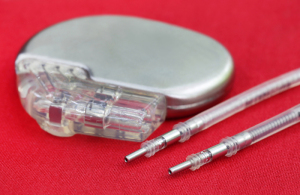by
Lauren Dubinsky, Senior Reporter | March 27, 2017

Researchers say centers should
perform 40-50 per year
Transvenous lead extraction is safer in high-volume centers than low-volume centers, according to the largest study of contemporary practice in Europe published on Thursday in European Heart Journal.
TLE — a percutaneous procedure that involves extracting the leads through the veins — is the standard for treating infections caused by pacemakers and defibrillators.
About 10,000 to 15,000 leads are extracted worldwide each year, according to the study, which was conducted by the European Heart Rhythm Association. Europe accounted for up to 5,000 of those extractions.



Ad Statistics
Times Displayed: 120958
Times Visited: 6963 MIT labs, experts in Multi-Vendor component level repair of: MRI Coils, RF amplifiers, Gradient Amplifiers Contrast Media Injectors. System repairs, sub-assembly repairs, component level repairs, refurbish/calibrate. info@mitlabsusa.com/+1 (305) 470-8013
The European Lead Extraction ConTRolled (ELECTRa) registry of TLE outcomes included 73 centers from 19 countries that enrolled 3,555 patients, of whom 5,510 underwent TLE.
The researchers collected data on the patients, leads, indications, techniques and outcomes, to study the acute and long-term safety of TLE. They then compared the complication rates at low- and high-volume centers.
High volume centers had a 2.4 percent rate of overall in-hospital major complications and a 1.2 percent rate of mortality, compared to 4.1 percent and 2.5 percent, respectively, for low-volume centers.
In a multi-variable analysis, lead extractions done at low-volume centers were associated with a double risk of death from all causes during the hospital stay and a double risk of clinical failure.
"The ELECTRa registry was not designed to define the minimum number of procedures needed to reduce complications and increase success, but if we extrapolate from the data it appears that [centers] should perform at least 40 to 50 TLE per year," Dr. Maria Grazia Bongiorni, lead author of the study, said in a statement.
The procedure-related major complications and deaths were more common in women, those with three or more leads that needed to be extracted, and those who've had leads for over 10 years.
Bongiorni explained that women have smaller and weaker blood vessels that are more vulnerable to damage.
She added that when leads are in the body for a long time, the risk of fibrosis increases, and more energy is required to detach them from the veins, which can lead to complications.
However, she concluded that TLE is safe and effective with a low incidence of life-threatening complications. Outcomes may even improve if centers perform at least 40 to 50 procedures per year.

